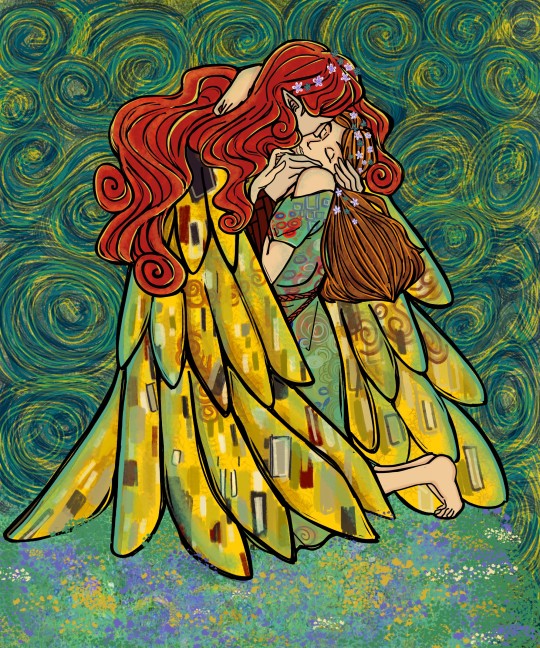Note
If I want to read the Fenian cycle, which translation(s) do you think are best? Any to definately avoid?
So, for Diarmaid and Gráinne, people probably already know my opinions on it, because I'm not shy, but AVOID THE O'GRADY EDITION. It's the standard because it's free, but it's free because it's outdated. Read the Ní Shéaghda edition + translation (and make sure you aren't getting the modern Irish version! ...unless you read Modern Irish, in which case, maith thú, ceannaigh an leabhar fós, mar sin rinne Ní Shéaghda é níos easca a léamh.) It explains a lot more about exactly how many manuscripts there are of it (over 40) and why certain things that O'Grady did REALLY aren't part of the tradition. (Little known fact: Diarmaid does not have a love spot in the Early Modern Irish text, nor does Fionn marry Gráinne after Diarmaid's death in all but one of the manuscripts. It doesn't mean they aren't an authentic part of the TRADITION, but if you're looking at what it says in the "original" text? No.)
Beyond that? The Fenian Cycle is...a maze. It doesn't seem like it at first, because the way we receive it is often very simplified, but the more I do with it, the more I realize there IS, and it can be, frankly, terrifying. But I recommend the Fionn Cycle Bibliography which has been compiled by Natasha Sumner at Harvard; it compiles...just about everything that's been done and sorts by text; I recommend going to the primary source listings and looking at what's been done recently. With some texts like the Acallam, there's still so much work to be done that I still struggle to say that we're even THERE yet, but it's going to be an improvement on the 19th century editions and translations.
For folklore, since there is a THRIVING oral tradition around the Fianna, going into the United States, I recommend FionnFolklore.org, run by the same. (The woman has spent her entire scholarly career making this stuff as accessible as possible.)
26 notes
·
View notes
Photo

Celticist Corner is having a field day and a LOT of new pinned messages got added
most of them are about wanting to fight Robert Graves
99 notes
·
View notes
Text

One of my favorite kennings for Loki is "farmr Sigvinjar arma", which translates roughly to "the cargo of Sigyn's arms". Add a little Gustav Klimt to the equation, and you have an idea that's been plaguing me for months.
205 notes
·
View notes
Text
Your cards cannot think for you your teachers cannot think for you spirits cannot think for you your gods cannot think for you. YOU have to think for you. Do not outsource your thinking onto other figures, because there are and will be people looking to fill that void and tell you where to go and what to do and how to spend your money, and you will cede all control if someone speaks it cleverly enough.
751 notes
·
View notes
Photo

my calendar said it was on the 28th but chabad.org said it was today so
59K notes
·
View notes
Text
me: i hope i dont get any jump scares for april fools
me, seeing an earnest and serious “celtic zodiac” post: AAAAAAAA
99 notes
·
View notes
Text
At some point I really do need to write that article that both highlights the flaws in O'Donnell's anti-homoerotic argument and argues with Sheehan about what makes CFD homoerotic.
Every time I reread O'Donnell's book, I'm struck by how he presents his argument only by shutting down the possibility of an alternative reading. I realise why he does that, contextually, but I think it does nobody any good to pretend that multiple readings (normative and queer alike) can't coexist. "This is not homoerotic." This is not necessarily homoerotic. That doesn't mean the possibility for homoeroticism is non-existent, and that's a tension I wish people in this field were readier to acknowledge.
It's also reductive to assume that everybody exploring queer possibilities is operating "within a critical lens in which all love is sexual", or to use the term "sexual reading" as though it's synonymous with "queer reading" or "homoerotic reading". After all, not all queer love is inherently sexual, although that is often an important facet of it; when I suggest a queer reading I'm by no means automatically assuming that everybody involved is banging.
As I've said before on my blog, a queer reading is about opening up new possibilities and new ways of exploring texts, free from the limitation of assuming everybody in the story is cishet or conforms to modern expectations of gender and sexuality. It's about looking at how gender and sexuality and affection are constructed within that cultural and literary context, and how certain elements of a narrative transgress, undermine, or question those norms -- not about ignoring context or making claims about authorial intention or believing you've stumbled upon the secret, sole truth about a story.
As such, I don't think there's anything incompatible about Sheehan's reading of the scene as homoerotic, and O'Donnell's reading of it as normative affection between foster brothers. Those two readings can -- and should -- exist alongside each other as different layers and lenses.
At the same time, I have serious problems with building a homoerotic reading only on the foundation laid by the gae bolga and the manner of Fer Diad's death -- equating homoerotic tensions with an act of grotesque violence. While I don't deny that that can be a starting point, I don't think it's the end of the story, and I'd like to focus more on other elements, as I think that's been overly dominant in discussions to date.
I'd also like to incorporate Fer Diad's poem from Stowe, the 'leth mo chroidhe' verse and the part where he expresses a desire to be buried with Cú Chulainn, because I think those contribute usefully to the discussion here, but are usually left out, because most discussions don't include Stowe.
But I am quite busy and tired and I don't know if now is the right time in my career to write an article that's basically arguing with everyone, so I guess this will remain on my to-write list forever, and never get written.
31 notes
·
View notes
Text
when u dont like ur art take a deep breath and remember u created it from nothing, like a god
224K notes
·
View notes
Text
For every claim about Pagan survivals in European / North American folk traditions and holidays, it's important to remember that there are at least three layers of cruft on top:
Sixteenth- and seventeenth-century Protestants trying to discredit Catholicism by claiming that it was secretly Pagan
Nineteenth-century Romanticists and Nationalists trying to construct an "authentic" volkisch identity by connecting everything to a remote pre-Christian (pre-Jewish) antiquity, and
Contemporary Neopagans and New Agers who want to maintain these traditions.
8K notes
·
View notes
Text



Mist and rays of light on the Enbara River // 癒しの自然風景 ♡
12K notes
·
View notes
Text
i feel like a lotta people are wildly unhappy and resistant to the concept that the answer to most things is "well, it depends"
15K notes
·
View notes
Text

Look at this beauty. ❤️ A stained glass piece by my friend Emily, inspired by the medieval Old Gaelic poem, Pangur Bán. It was by a monk who would work tirelessly at his studies as his cat, Pangur Bán, faithfully hunted mice. She doesn't have a website for her work yet but if you are on Bluesky you can follow her there, https://bsky.app/profile/stonkers.bsky.social.
913 notes
·
View notes
Text

Eight of Cups and The Lovers
You thought you were getting away from all the weirdness, only now you seem to have wandered into a nudist colony.
228 notes
·
View notes



